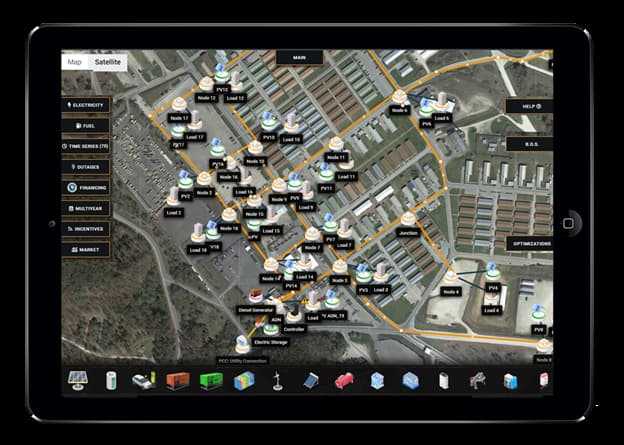
The U.S. Department of Defense (DoD) has identified microgrids as a critical technology for increased security, energy efficiency, and resilience at new and existing military installations. The DoD has enlisted the microgrid specialists at Xendee to design and operate these facilities and assess a number of variables.
“Microgrids can reduce military installations’ energy and physical footprint and increase resiliency. They lessen dependence on fuel supplies and their impacts on local communities while improving uninterrupted power. This is all without disruptions to local utility networks,” said Michael Stadler, CTO and co-founder of Xendee. “These microgrid projects will change how the Department of Defense runs operations at its installations by providing sustainable options for energy efficiency and resilience.”
Xendee’s software has the ability to streamline the microgrid design process while cutting costs and increasing efficiency. It is currently being demonstrated at three different DoD installations, all of which are assessing different scenarios.
- The Naval Submarine Base Kings Bay, in Kings Bay, Ga., mandated resilience against outages as a major design priority. Another focus of this installation was examining the ongoing installation upgrades to determine feasibility, return, and alternatives.
- The USAG Bavaria, in Grafenwöhr/Vilseck, Germany, project included optimized investment, placement, dispatch, financial analysis, power flow engineering, and training for Army staff. This facility also included a full electrical heating system.
- The Naval Base San Diego was the final demonstration and examined how an onsite microgrid installation could be more cost and emission-efficient than running new cabling to the building.
The average costs to complete even the most complex modeling using Xendee’s solutions resulted in less than 1 percent of total project costs.
Xendee’s platform assessed a number of technologies at these installations, including solar, battery storage, diesel generators, heat pumps, Combined Heat and Power (CHP) engines, and cable and transformer upgrades.
Xendee’s optimization engine then analyzes and optimizes the investment strategy taken, the sizing and placement of technologies, and the actual dispatch of the system over every time step of the year. This technology streamlines the whole microgrid design and implementation process, saving engineering time and removing the burden and risk of transferring data between systems.
Additionally, as part of this project, Xendee and its partner, Arizona State University, created a DoD-specialized training curriculum designed to train service members on how to use the Xendee software. Xendee also completed DoD Cybersecurity Maturity Model Certification (CMMC), making it a cyber secure platform for DoD applications.
“Our primary objective was to train uniformed and civilian military personnel on a standardized, repeatable process for building and interpreting microgrid models,” said Nathan Johnson, Associate Professor in The Polytechnic School at Arizona State University and Director of the Laboratory for Energy And Power Solutions (LEAPS). “Additionally, by mapping the training program and certificates to military job codes, ASU and Xendee have created a pipeline for training and deploying DoD certified users at scale.” This effort extends a history of training provided by Arizona State University to installation personnel and transitioning Veterans.
Xendee recently announced an integration with UtilityAPI to offer engineers more accurate load data and emission profiles. The integration is meant to aid users in efficiently downloading past building load data directly from utilities, giving engineers more accuracy in past usage and peak project requirements. Xendee also unveiled its new multi-node feature for designing sustainable communities, large facilities, and utility-scale microgrids. Users can connect up to 25 different technologies to generate advanced microgrid designs applicable to real-world positioning.
— Solar Builder magazine

Leave a Reply
You must be logged in to post a comment.